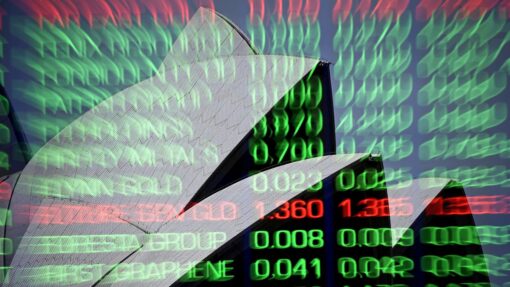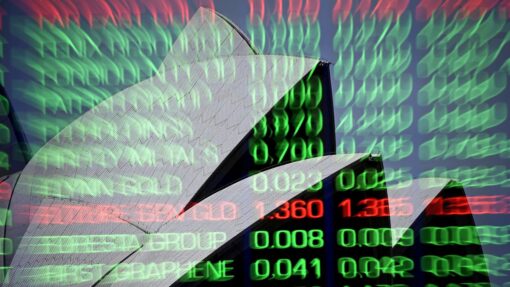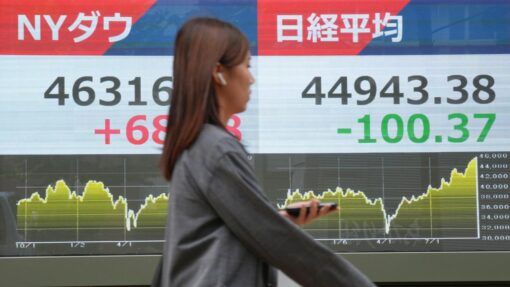First loss in a week for Australian stocks
Derek Rose |
The local share market has closed modestly lower as unrest over China’s harsh COVID-19 policies grips Australia’s biggest trading partner.
The benchmark S&P/ASX200 index on Monday closed down 30.4 points, or 0.42 per cent, to 7229.1, while the broader All Ordinaries dropped 29 points, or 0.39 per cent, to 7418.6.
The energy sector lost the most ground, falling 1.7 per cent, as Brent crude dropped by $US2 to under $US82 a barrel for the first time since January.
Woodside and Santos both fell 2.7 per cent, to $36.96 and $7.25, while Beach dropped 2.6 per cent to $1.71. News that Woodside had delivered its first-ever LNG cargo to Europe on Sunday didn’t seem to budge the market much.
Analysts blamed the oil price drop on concerns about the situation in China, where hundreds of protesters clashed with police in Shanghai over harsh COVID-19 restrictions following a deadly fire in the country’s far west.
“I think they’re getting quite fed up with it – there’s obviously quite a lot of disruptions to their general lives, work, family, et cetera,” CMC Markets analyst Azeem Sheriff told AAP.
Coalminers had a better day, with Whitehaven up 4.0 per cent and New Hope gaining 5.4 per cent.
In the mining sector, BHP dropped 0.7 per cent to $43.89 and Rio Tinto dipped 1.4 per cent to $104.15, although Fortescue Metals added 0.5 per cent to $19.04.
In the heavyweight financial sector, the big banks were mostly lower, with CBA dropping 0.7 per cent to $108.48, Westpac dipping 1.0 per cent to $23.76 and ANZ down 0.4 per cent to $24.72. NAB was the outlier, rising 0.3 per cent to $31.59.
Also, Bank of Queensland fell 5.6 per cent to $7.14 after the regional lender announced its chief executive of over three years had been forced out, effective immediately.
Chairman Patrick Allaway praised departing CEO George Frazis for upgrading the bank’s technology but said “the board has formed a view that different leadership is now required to ensure that BOQ can continue to build a stronger and more resilient bank through future cycles.”
In healthcare, Healius fell 10.1 per cent to a two-year low of $3.03 after the imaging and pathology chain said its EBITDA earnings were down 64 per cent to $124.3 million in the four months to October, compared to the same time last year.
In part that’s due to COVID testing declining from 13,000 tests per day in July to around 3000 to 4000 per day in October, but there are also “well-publicised headwinds currently affecting the economy and the healthcare sector”, Healius said, mentioning shortages of frontline staff and GPs as well as issues with test reimbursements.
The local currency had also dropped following the China unrest.
The Australian dollar was buying 66.74 US cents, from 67.64 US cents at Friday’s ASX close.
Looking forward, Mr Sheriff said that late in the week, traders would be watching the release of US non-farm payroll figures as well as an alternative measure of inflation for the United States.
OPEC members and their allies are also scheduled to meet over the weekend.
ON THE ASX:
* The benchmark S&P/ASX200 index closed Monday down 30.4 points, or 0.42 per cent, at 7229.1.
* The broader All Ordinaries dropped 29 points, or 0.39 per cent, to 7418.6.
CURRENCY SNAPSHOT:
One Australian dollar buys:
* 66.74 US cents, from 67.64 US cents at Friday’s close
* 92.58 Japanese yen, from 93.77 Japanese yen
* 64.55 Euro cents, from 64.96 Euro cents
* 55.48 British pence, from 55.89 British pence
* 107.68 NZ cents, from 108.03 NZ cents.
AAP


